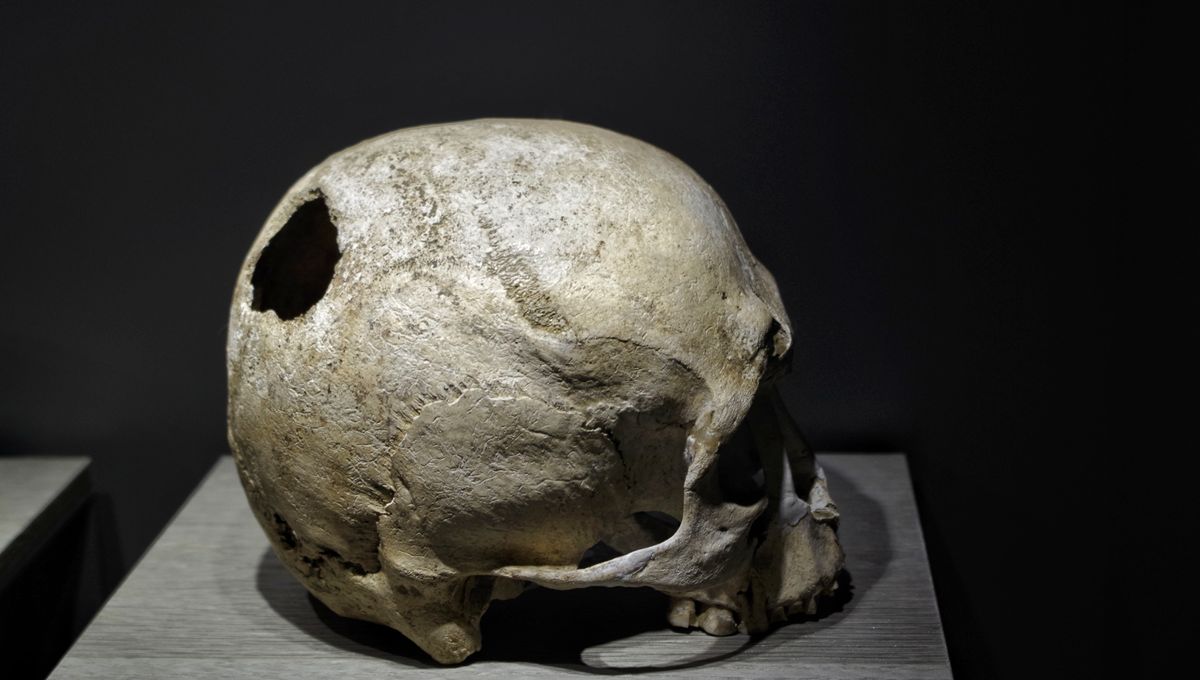
Life in the Stone Age was hard enough without a bunch of ghosts hanging out inside your skull and messing with your brain. Fortunately, ancient neurosurgeons had a cure for haunted heads, leaving thousands of patients with enormous exit holes – some up to 10 centimeters (3.9 inches) wide – drilled into their noggins.
Known as trepanation, the practice of boring a hole into the skull was a common surgical procedure in prehistoric times, with examples discovered at archaeological sites around the world. After analyzing the cavities in 41 Neolithic crania from France, the authors of a new study have shed new light on the nature of this crude procedure, revealing just how invasive and un-subtle it really was.
Housed at the Musée de l’Homme in Paris, the skulls examined by the researchers were between 8,000 and 4,000 years old, and were among 159 in the collection that showed signs of having been trepanned. Using a digital caliper, the study authors measured the width of these surgical openings, revealing that the average trepanation was between 2.95 and 5.43 centimeters wide (1.16 to 2.14 inches).
However, while even the lower end of this range might sound like an unacceptably large puncture in one’s bonce, the researchers report that some of the holes exceeded 10 centimeters (3.9 inches) in width. And yet, despite the obvious drawbacks associated with a broken skull, the majority of ancient trepanations worldwide show signs of healing, suggesting that most patients did actually survive for some time after their surgery.
“The high survival rate, despite the danger of cerebral edema, infection, hemorrhage, and shock, is a clear indication of the high level of skill and experience of these early surgeons who performed the trepanation,” write the study authors. It has been suggested, for instance, that Neolithic doctors may have sterilized their stone tools before digging into patients’ skulls, while plants with natural painkilling or antibiotic properties may have been used to help trepanees overcome their ordeal.
Exactly why trepanation was so popular in prehistory is not clear, although some scholars believe the procedure may have been performed to relieve intracranial pressure caused by injury or pathology – as, indeed, it still is today in rare cases. On the other hand, legendary 19th-century neurologist and anthropologist Paul Broca speculated that the practice may have been linked to the belief that seizures were caused by demons who needed to be released by opening holes in the skull.
Whatever possessed Stone Age physicians to carve chunks out of their patients’ heads, trepanation represents an intriguing experimental step on humanity’s path towards surgical proficiency. As such, the study authors say their new insights are “very important in trying to understand the origin of today’s neurosurgery by tracing its earliest steps.”
The study is published in the journal World Neurosurgery.
Source Link: Neolithic Europeans Walked Around With 5.5-Centimeter Holes In Their Skulls